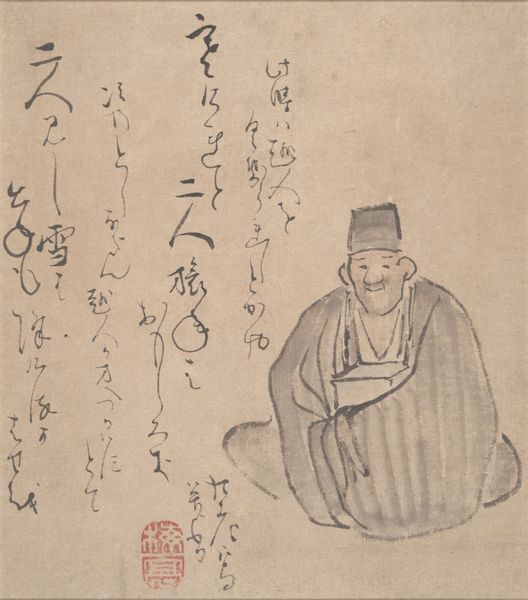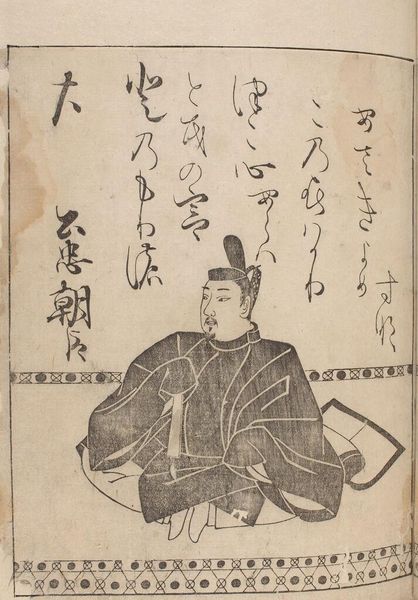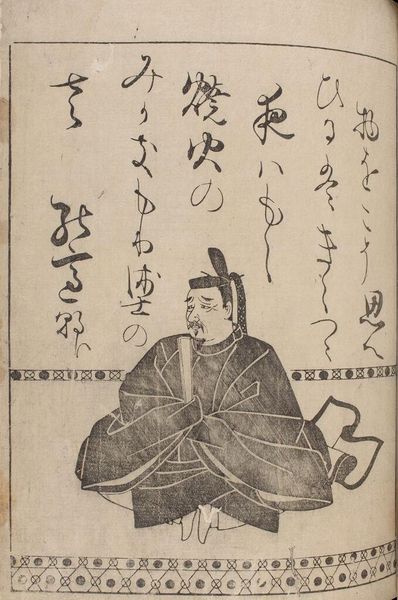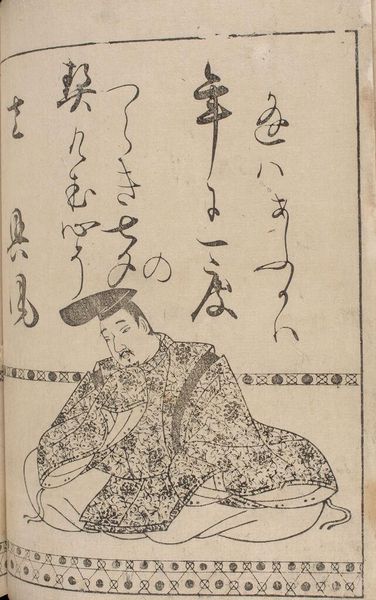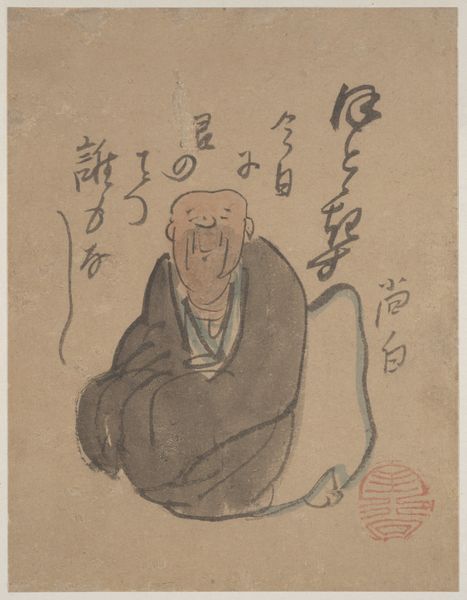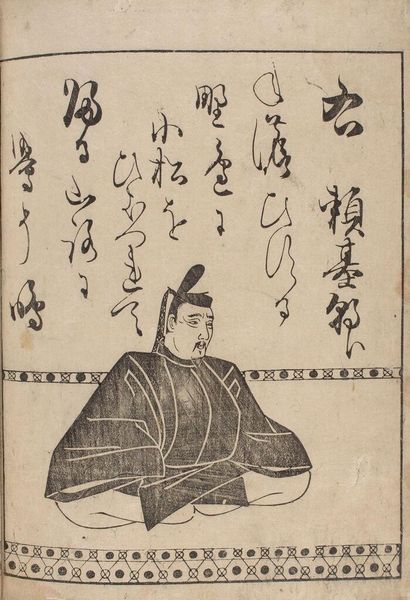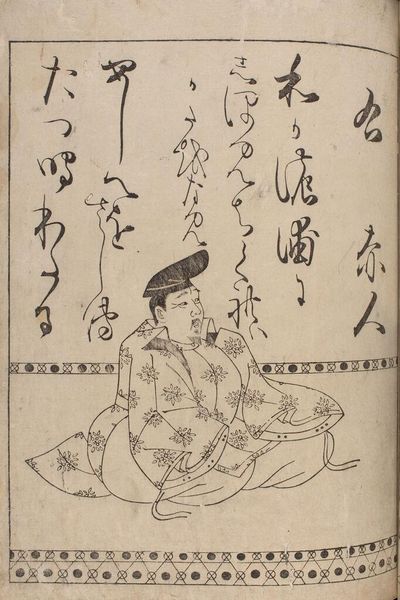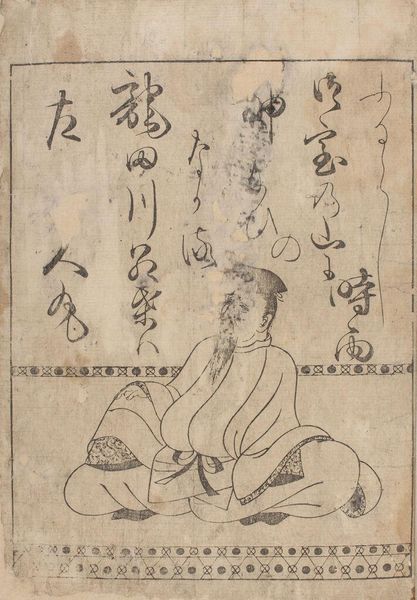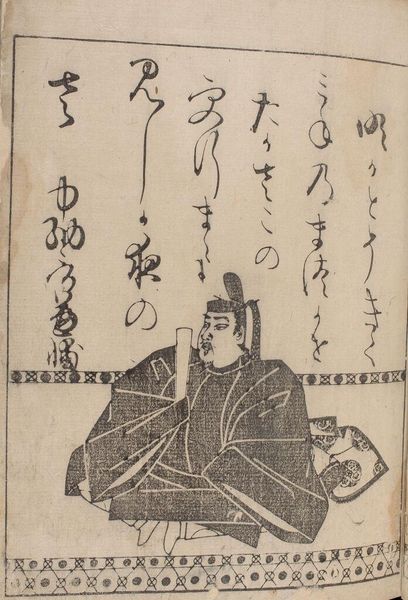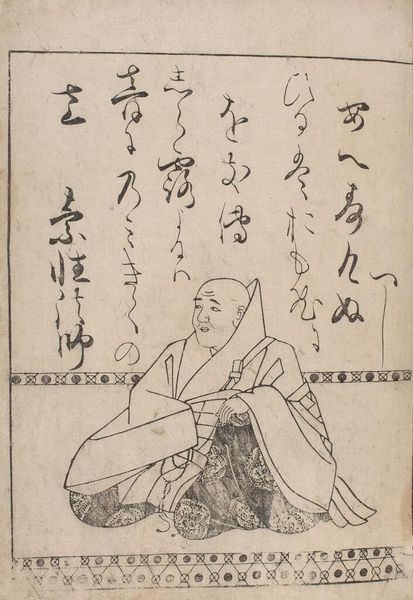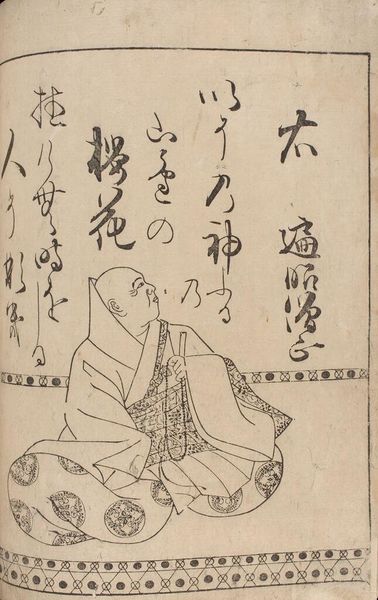
painting, paper, watercolor, hanging-scroll, ink, color-on-paper
#
portrait
#
narrative-art
#
painting
#
asian-art
#
landscape
#
ukiyo-e
#
japan
#
paper
#
watercolor
#
hanging-scroll
#
ink
#
color-on-paper
#
calligraphy
Dimensions: 47 × 19 5/16 in. (119.38 × 49.05 cm) (image)75 3/8 × 25 1/4 in. (191.45 × 64.14 cm) (mount, without roller)
Copyright: Public Domain
Curator: Looking at this hanging scroll, it strikes me how vulnerable the deer looks, almost childlike against the backdrop of Japanese calligraphy. What's your initial impression? Editor: It definitely evokes a sense of intimacy and fragility. Knowing that it is a work entitled "Basho and Deer," made with ink and color on paper sometime in the late 18th or early 19th century by Ki Baitei, provides a layer of context. The tenderness is heightened considering it is hanging scroll artwork, a traditional East Asian way of displaying painting. Curator: Absolutely. Hanging scrolls like this have a unique meditative quality, something I think Baitei was playing with here. The deer, an ancient symbol, is often associated with gentleness, grace, but it also appears in mythology with deep symbolic meaning. What might its presence mean in relation to the poet Basho? Editor: Considering the time period, perhaps the deer could represent resilience amid turbulent times. Looking at Basho himself, we see a figure adorned in relatively plain clothing, which signals the historical context. Perhaps it serves to create an interplay between the vulnerable and the composed. Curator: Interesting! I'm also drawn to the apparent serenity in Basho's gaze, despite the precariousness the deer may represent. There's a spiritual link established between human and animal, echoing the deeper connection between humanity and nature that often appears in East Asian art and philosophy. Editor: Yes, a connection perhaps rooted in empathy. But considering the tradition of Ukiyo-e in Japan, a floating world, could it also address the fleeting nature of life, the ephemeral? Is Baitei suggesting we observe and learn, but also realize the impermanence of everything, from culture, political unrest, to a brief, spontaneous connection to nature? Curator: That’s a valid point! It challenges the straightforward idyllic reading. The scroll seems to want us to contemplate the ever-changing circumstances in the world. Editor: The more one looks, the deeper one questions the composition, especially the balance that the animal represents and evokes. What looks soft on the surface might carry a deeper, almost troubling, undercurrent. Curator: A sentiment which resonates, indeed. Thank you for those ideas, it has offered me much to ponder! Editor: As for myself! The dialogue of time continues to be spoken across the canvas it seems.
Comments
No comments
Be the first to comment and join the conversation on the ultimate creative platform.
